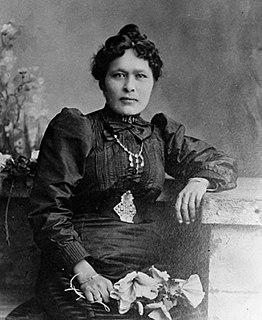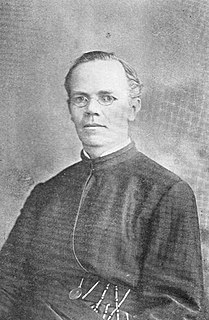Goldfield, Nevada
On the opening of Goldfield, Nevada, Bond was highly successful as a mining engineer and became financially interested in a number of mines. He was identified with all the interests of the camp.
During the last year he had spent much time in the examination of mining properties in the vicinity of Death Valley, and in the oil fields at Mono Lake, California
Mr. Bond died at his home in Berkeley, California, July 27, 1908, after an illness of several months from cancer of the stomach. His burial was in Seattle, Washington. He was in his 43d year.
He married, at Seattle on May 24, 1894, Mary Hyde, daughter of Carlos Bancroft and Kate (Hyde) Wilson, of Montpelier, Vermont. They had two sons (Marshall Louis Bond and Edward Latham Bond) and one daughter Kathryn (Kate) Hyde (Bond) Warner. His grandson is Whitford Bond a Boston commercial real estate broker.

John Griffith London was an American novelist, journalist, and social activist. A pioneer of commercial fiction and American magazines, he was one of the first American authors to become an international celebrity and earn a large fortune from writing. He was also an innovator in the genre that would later become known as science fiction.

The Klondike Gold Rush was a migration by an estimated 100,000 prospectors to the Klondike region of the Yukon, in north-western Canada, between 1896 and 1899. Gold was discovered there by local miners on August 16, 1896, and, when news reached Seattle and San Francisco the following year, it triggered a stampede of prospectors. Some became wealthy, but the majority went in vain. It has been immortalized in artifacts, films, games, literature, and photographs.

The Call of the Wild is a short adventure novel by Jack London, published in 1903 and set in Yukon, Canada, during the 1890s Klondike Gold Rush, when strong sled dogs were in high demand. The central character of the novel is a dog named Buck. The story opens at a ranch in Santa Clara Valley, California, when Buck is stolen from his home and sold into service as a sled dog in Alaska. He becomes progressively primitive and wild in the harsh environment, where he is forced to fight to survive and dominate other dogs. By the end, he sheds the veneer of civilization, and relies on primordial instinct and learned experience to emerge as a leader in the wild.

Dawson City, officially the Town of the City of Dawson, is a town in the Canadian territory of Yukon. It is inseparably linked to the Klondike Gold Rush (1896–99). Its population was 1,375 as of the 2016 census, making it the second largest town of Yukon.

Asahel Curtis (1874–1941) was a photographer based in the Pacific Northwest region of the United States. His career included documentation of the Klondike Gold Rush period in Seattle, natural landscapes in the Northwest, and infrastructure projects in Seattle.

Carmacks is a village in Yukon, Canada, on the Yukon River along the Klondike Highway, and at the west end of the Robert Campbell Highway from Watson Lake. The population is 493. It is the home of the Little Salmon/Carmacks First Nation, a Northern Tutchone-speaking people.

Shaaw Tláa, also known as Kate Carmack, was a Tagish First Nation woman who was one of the party that first found gold in the Klondike River in 1896, and is sometimes credited with being the person who made the actual discovery.
Clarence Jesse Berry (1867–1930), known as C.J., was a businessman and successful gold miner in the Klondike Gold Rush. He and his wife, Ethel Bush Berry, made a further fortune in Ester, Alaska, in 1902, and founded several oil companies over the years, which eventually became Berry Petroleum Company.

Alexander Pantages was a Greek American vaudeville impresario and early motion picture producer. He created a large and powerful circuit of theatres across the western United States and Canada.

George Washington Carmack was an American-born prospector in the Yukon. He was originally credited with registering Discovery Claim, the discovery of gold that set off the Klondike Gold Rush on August 16, 1896. Today, historians usually give the credit to his Tagish brother-in-law, Skookum Jim Mason.

Leroy Napoleon "Jack" McQuesten (1836–1909) was a pioneer in Alaska and Yukon as an explorer, trader, and prospector; he became known as the "Father of the Yukon." Other nicknames included "Yukon Jack," "Captain Jack," "Golden Rule McQuesten," and "Father of Alaska." Together with partners Arthur Harper and Captain Alfred Mayo, he founded Fort Reliance and a wide network of trading posts in the Yukon, often providing a grubstake to prospectors. He was the most successful financially of the trio, becoming a multi-millionaire by 1898 and buying a large Victorian mansion for his family when they moved about that time to Berkeley, California.

Father William Judge was a Jesuit priest who, during the 1897 Klondike Gold Rush, established St. Mary's Hospital, a facility in Dawson City which provided shelter, food and any available medicine to the many hard-luck gold miners who filled the town and its environs. For his selfless and tireless work, Judge became known as "The Saint of Dawson".
Hiram Bond was born May 10, 1838 in Farmersville, Cattaraugus County, New York and died in Seattle March 29, 1906. He was a corporate lawyer, investment banker and an investor in various businesses including gold mining. His family are descended from William Bond (Massachusetts) an early 17th-century immigrant from Bury St. Edmunds in East Anglia. He was the son of Hiram Bond M.D. and Almeda Slusser and was married to Laura Ann Higgins. He had two children- Louis Whitford Bond born in New York City, New York in 1865 and Marshall Latham Bond born in Orange, Virginia in 1867. He attended Rushford Academy, Rushford, New York, and earned a bachelor's degree from Hamilton College. He earned much of the money for his own education as a distributor of maps and atlases. Among his successes were becoming a publisher, and taking over the rights to a map of the United States which had been prepared by Matthew Fontaine Maury, a Southerner who was a United States cartography officer. Maury, who decided to join the Confederacy, had left the work unpaid for in New York. He matriculated at Harvard Law School, but before graduation he was hired as a law clerk by Chauncey Depew, a friend and neighbor of his father in law Michael Dunning Higgins of Peekskill.
Marshall Latham Bond was one of two brothers who were Jack London's landlords and among his employers during the autumn of 1897 and the spring of 1898 during the Klondike Gold Rush. They were the owners of the dog that London fictionalized as Buck in his 1903 novel The Call of the Wild.
James Pieronnet Pierce was a California pioneer entrepreneur.
The Klondike Gold Rush is commemorated through film, literature, historical parks etc.
Gold Trails and Ghost Towns is a historical documentary show first produced for Canadian syndication, created and produced by television station CHBC-TV in Kelowna, British Columbia and hosted by Mike Roberts with historian storyteller Bill Barlee. The show was filmed in a studio which resembled an old trapper's cabin. Mike and Bill discussed history of the old West by prospectors around 1900 in British Columbia.

The Klondike Mines Railway (KMRy) was a 3 ft narrow gauge railway operating in the Klondike region of Yukon, Canada. Construction on the KMRy began in 1905 and the railway ceased operations in 1913.
Thomas William O'Brien was a Klondike gold rush entrepreneur who was best known for his Klondike Mines Railway and Klondike brewery businesses. He was also elected as a member of the Yukon Territorial Council, and was the first president of the Yukon Order of Pioneers, Klondike Lodge.

Discovery Claim is a mining claim at Bonanza Creek, a watercourse in the Yukon, Canada. It is the site where, in the afternoon of August 16, 1896, the first piece of gold was found in the Yukon by prospectors. The site is considered to be the place where the Klondike gold rush started. It is located around 17 km south-southeast of Dawson City. The Discovery claim was designated a National Historic Site of Canada on July 13, 1998.












